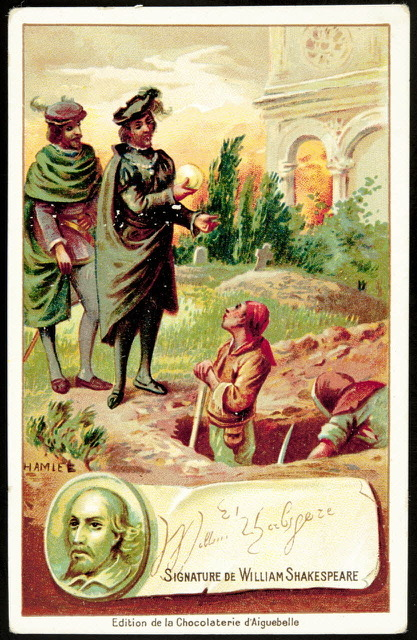
The dramatic colours of trade cards
Colour Pedagogy
1884
The 1870s saw the unprecedented rise of trade cards as a marketing technique for small and big businesses. While small printed cards giving the name, occupation and premises of a tradesman or business were nothing new, the invention of chromolithography in the 1830s, along with the rise of mass retailing and advertising culture, radically transformed these objects.
In France, historians usually credit Aristide Boucicaut (1810–1877), founder and owner of Le Bon Marché, with the idea of giving away small brightly coloured chromolithographic cards from around 1872 onwards. New images were offered every Thursday, coinciding with the day children were not in school. Boucicaut, followed by many others, strategically capitalised on children's eagerness for these vividly coloured cards and their love of collecting. Simultaneously, efforts were made to appeal to parents—particularly mothers—by emphasising the cultural and didactic value embedded in the images.
This particular chromo was printed by the Chocolaterie d'Aiguebelle, a French chocolate factory, whose name appears on the bottom white frame of the picture. The picture shows Hamlet, next to Horatio, holding a skull. In the foreground, two gravediggers are shovelling out a grave. Although the scene is immediately recognisable, the title of the tragedy has been added to the bottom left corner of the picture. Just below the inscription is a medal-like portrait of Shakespeare, his expression and features rather reminiscent of the Soest portrait, which had been so widely reproduced in various mediums that "it retained a popular following into the nineteenth century as a convincing portrait of Shakespeare". The medallion is attached to a piece of paper with Shakespeare's signature. The signature is the same as that which had been found in the early 19th in John Florio's translation of Montaigne's Essays (which has since then been recognised as forged).
The reverse side of the chromo has text only. The first half of the card consists of a short laudatory biography of Shakespeare, adapted from various sources, including Pierre Larousse's Grand dictionnaire universel du XIXe siècle (1866-1876). The bottom part advertises the excellence of Aiguebelle's chocolate. Both the picture and the text were used by many other companies in France and Europe in the following years, thereby testifying to its dissemination.
While the description of the card states that the chromo is inspired from Delacroix's Hamlet et Horatio au cimetière, I believe it may have been adapted from another painting by Pascal Adolphe Dagnan-Bouveret, dated 1883. Hamlet et les fossoyeurs was first exhibited at the 1884 Salon in Paris and appeared in multiple copies in the press that same year. While Delacroix's version is deliberately dark and ominous, Dagnan-Bouveret's staging of the scene was only popular at the time the chromo was printed, it was also strikingly more colourful and naturalistic. Dagnan-Bouveret's addition of multiple white flowers and a red-brick building, in particular, give the scene a radically different atmosphere. Although this version was widely dismissed by art critics, Dagnan-Bouveret's painting offered a source of inspiration better suited to translation into a commercial chromo. Advertisers, targeting children as consumers and persuaders, relied on the power of eye-catching colours to entice them. Dagnan-Bouveret's lighter staging, translated into the chromo's green grass strewn with white touches or the beautiful orange hues of the sky at dusk, are evidence enough of the key role of chromolithography in modern advertising strategies.
Bibliography
-
Cooper, Tarnya (ed.), Searching for Shakespeare, New Haven: Yale University Press, 2006, p. 70.